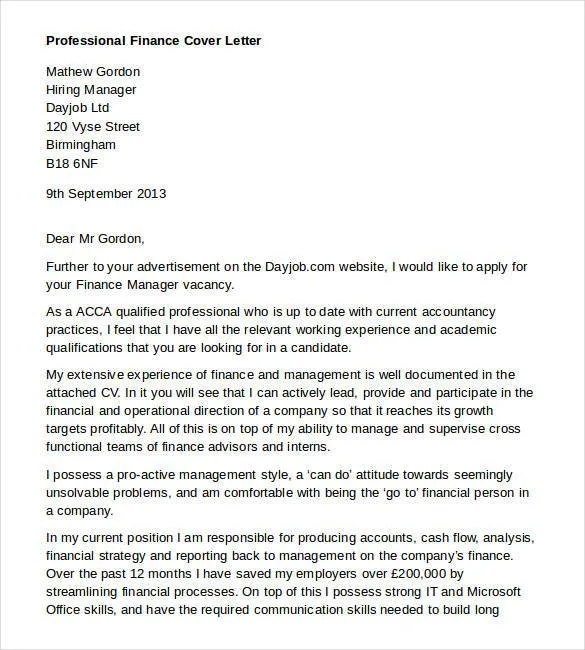What is a Finance Cover Letter
A finance cover letter is a crucial document that accompanies your resume when applying for finance-related positions. It serves as your introduction to the hiring manager, providing an opportunity to showcase your skills, experience, and passion for the field. This letter allows you to go beyond the bullet points of your resume, giving you the space to explain why you are the ideal candidate for the specific role.
Purpose of a Finance Cover Letter
The primary purpose of a finance cover letter is to persuade the reader that you possess the necessary qualifications and are a strong fit for the role and the company. It should highlight your key skills, relevant experience, and accomplishments, while also demonstrating your understanding of the company’s values and goals. A well-crafted cover letter sets you apart from other applicants and increases your chances of landing an interview.
Importance in the Job Application Process
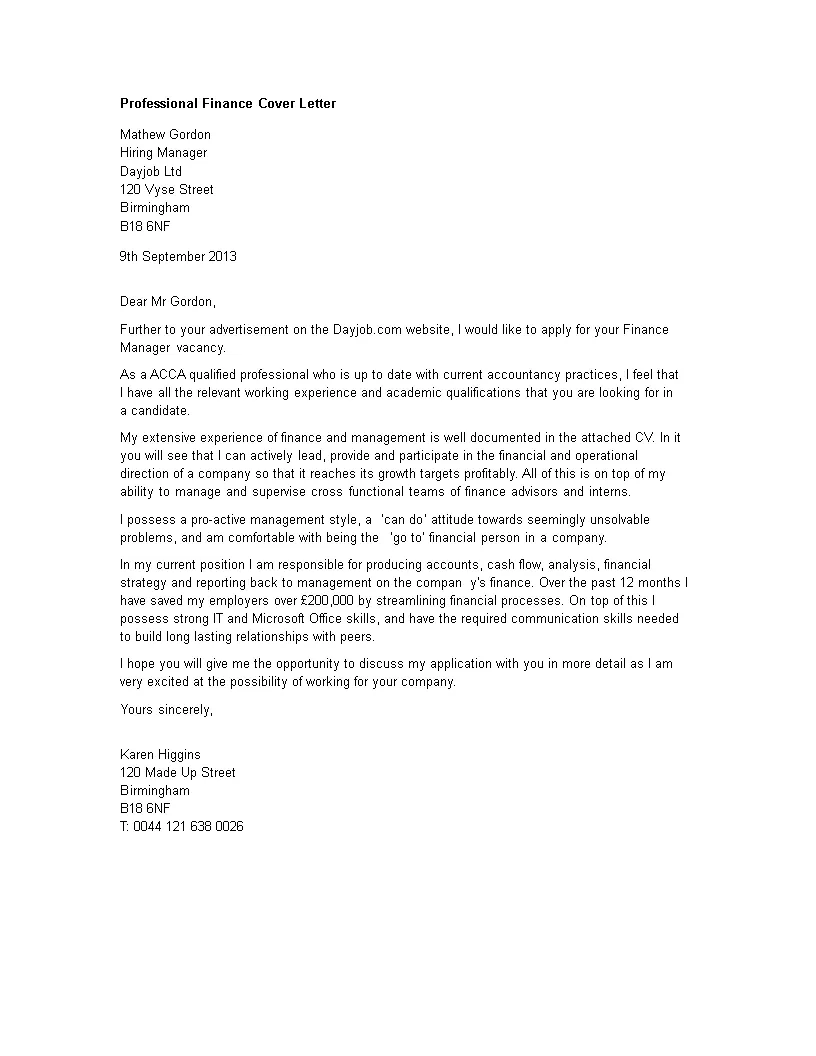
In the competitive world of finance, a cover letter is often the first impression you make on a potential employer. It demonstrates your communication skills, attention to detail, and genuine interest in the position. Hiring managers frequently use cover letters to screen candidates, so a compelling letter can be the key to getting your resume noticed and securing an interview. A strong cover letter can showcase your personality and make you memorable.
Key Components of a Finance Cover Letter
Header Information
The header of your finance cover letter should include essential information to identify you and the recipient. This section sets the tone for a professional and well-organized document, providing easy access to your contact details and establishing the date of the letter.
Your Contact Details
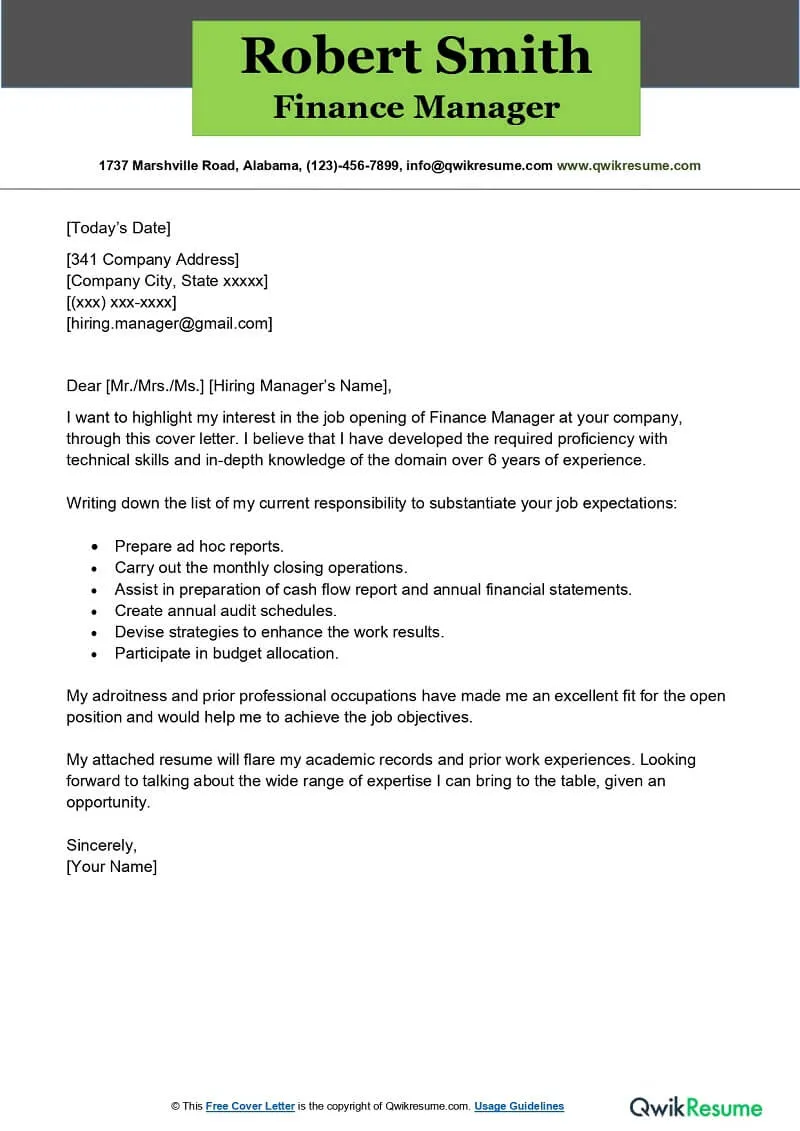
At the top left of your cover letter, include your full name, phone number, email address, and optionally, your LinkedIn profile URL. Ensure that your email address is professional and that your LinkedIn profile is up-to-date. This information allows the hiring manager to easily contact you if they are interested in your application.
Date and Recipient’s Details
Beneath your contact details, on the right side, include the current date. Following the date, include the hiring manager’s name (if known), their title, the company’s name, and the company’s address. Addressing the letter to a specific person demonstrates that you’ve done your research and are taking the application seriously.
Professional Salutation
Begin your cover letter with a professional salutation. If you know the hiring manager’s name, use “Dear Mr./Ms./Mx. [Last Name]”. If you are unsure of the name, use a general greeting such as “Dear Hiring Manager” or “Dear [Company Name] Hiring Team”. Avoid outdated salutations like “To Whom It May Concern”.
Body Paragraphs
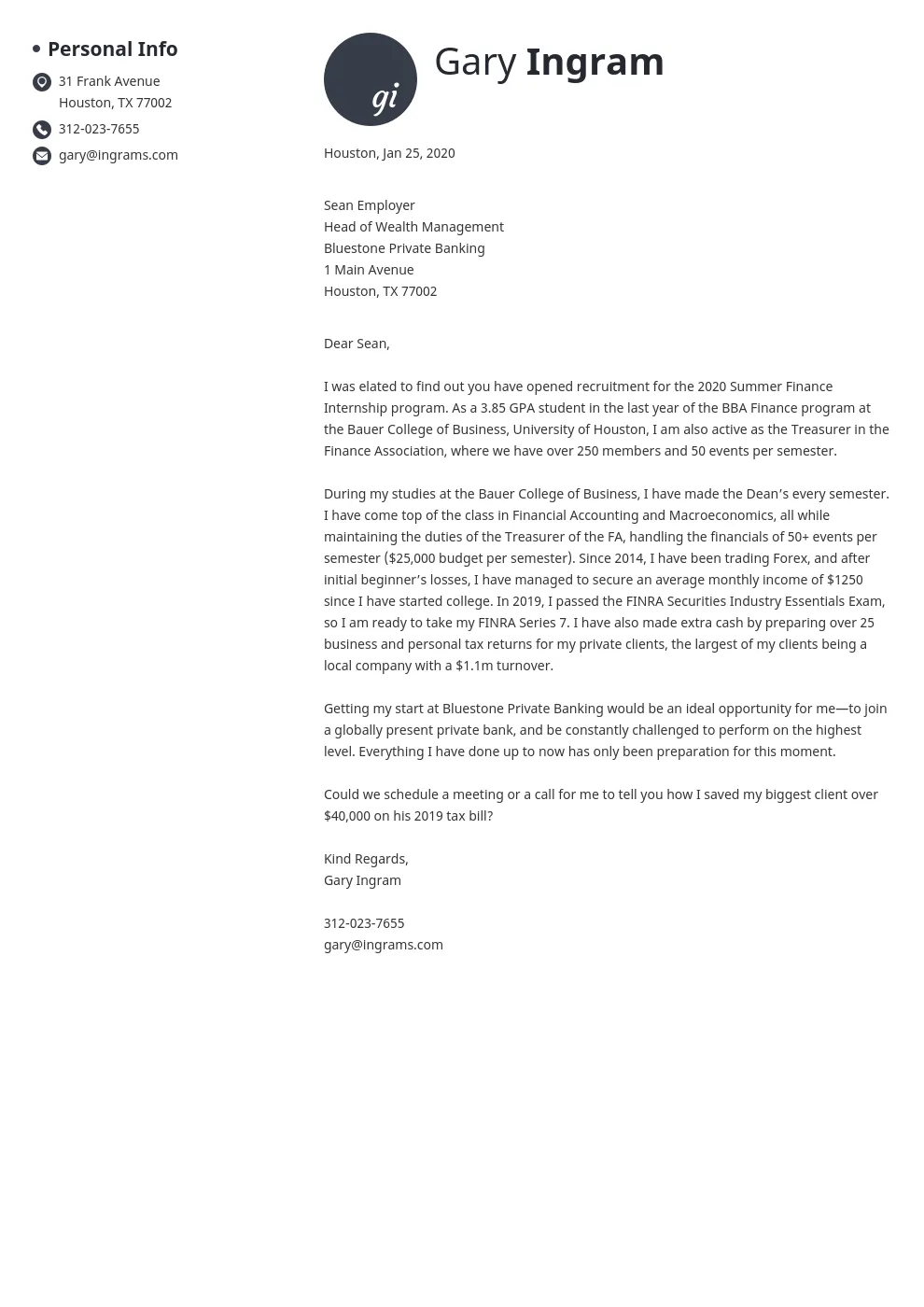
Opening Paragraph
The opening paragraph should immediately grab the reader’s attention. State the position you are applying for and how you found the job posting. Briefly mention your most relevant qualifications and express your enthusiasm for the opportunity. Keep it concise and compelling, setting the stage for the rest of your letter.
Highlighting Your Skills and Experience
In the body of your cover letter, delve into your relevant skills and experience. Focus on the qualifications that align with the job description, providing specific examples of your accomplishments. Tailor this section to the specific requirements of each role, ensuring you demonstrate your understanding of the finance industry and the company’s needs.
Quantifying Achievements
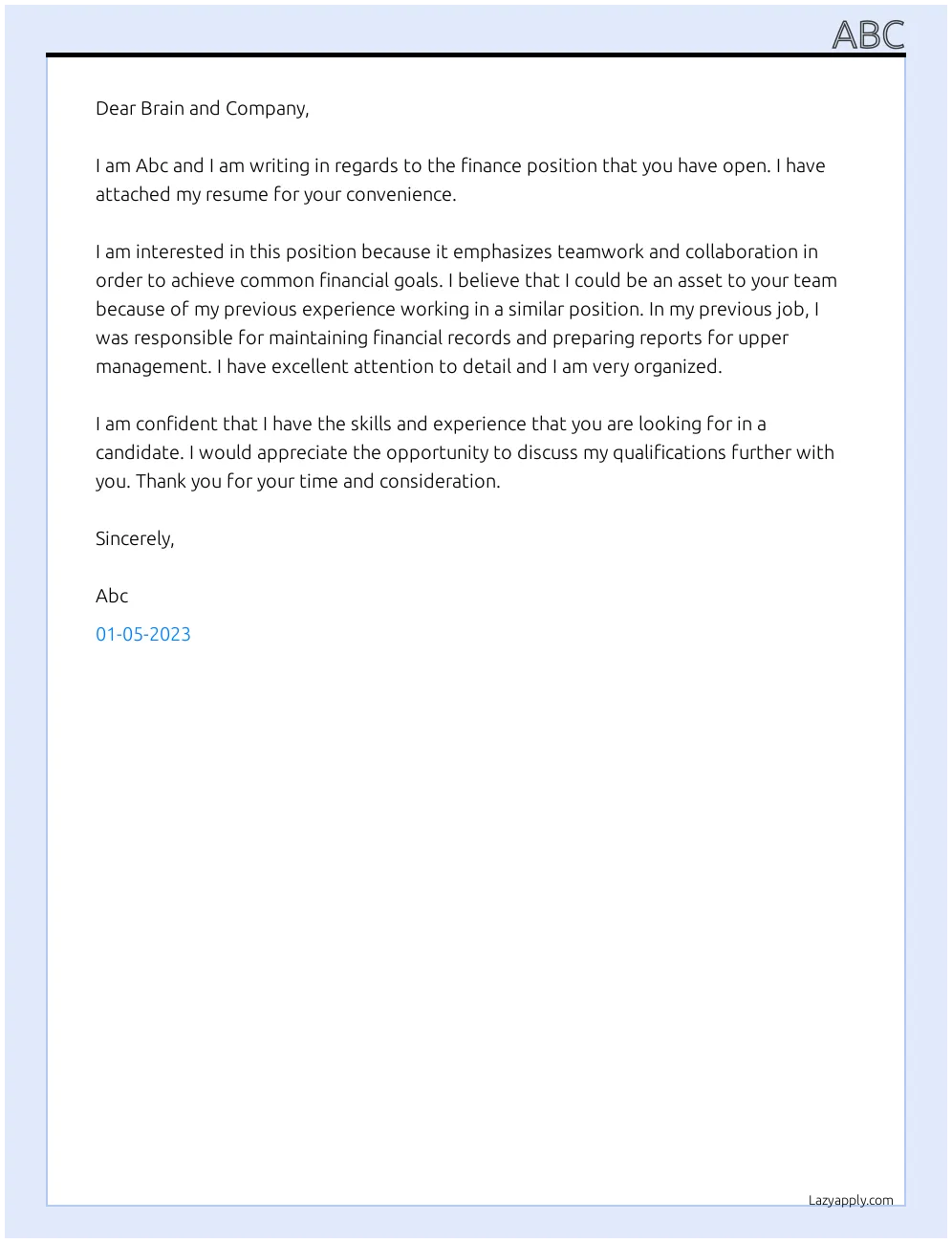
Whenever possible, quantify your achievements using numbers, percentages, and data. For instance, instead of saying “Improved efficiency”, state “Improved efficiency by 15% through process optimization”. This provides concrete evidence of your abilities and makes your accomplishments more impactful.
Demonstrating Passion for Finance
Show your passion for finance by discussing your interests, knowledge, and understanding of the industry. Mention any relevant certifications, coursework, or projects that showcase your dedication. Express your enthusiasm for the company and why you are excited about the specific role.
Closing Paragraph
In the closing paragraph, summarize your key qualifications and reiterate your interest in the position. Thank the hiring manager for their time and consideration. This section should leave a lasting positive impression and encourage them to contact you for an interview.
Call to Action
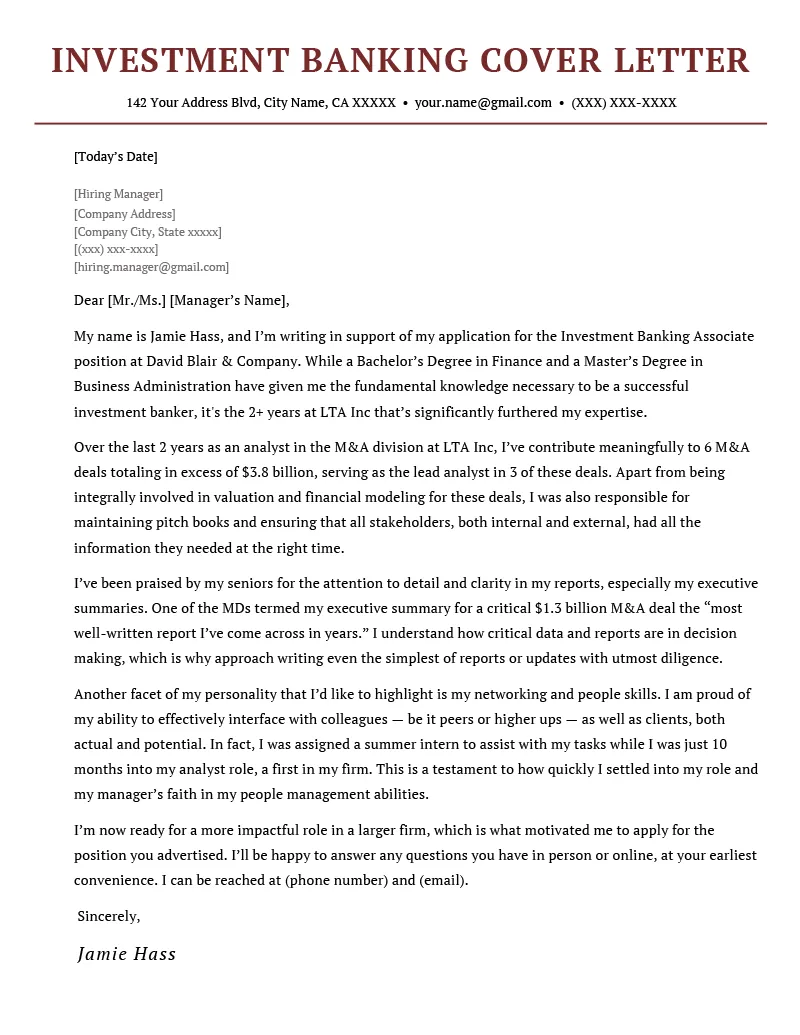
Include a clear call to action in your closing paragraph. Express your eagerness to discuss your qualifications further and mention your availability for an interview. Make it easy for the hiring manager to take the next step.
Formal Closing
End your cover letter with a professional closing. Use “Sincerely”, “Best regards”, or “Respectfully” followed by your full name. Ensure that your closing is formal and reflects the professional tone of the letter.
Formatting and Design
The formatting and design of your finance cover letter play a crucial role in making it visually appealing and easy to read. A well-formatted letter demonstrates your attention to detail and professionalism.
Font and Font Size
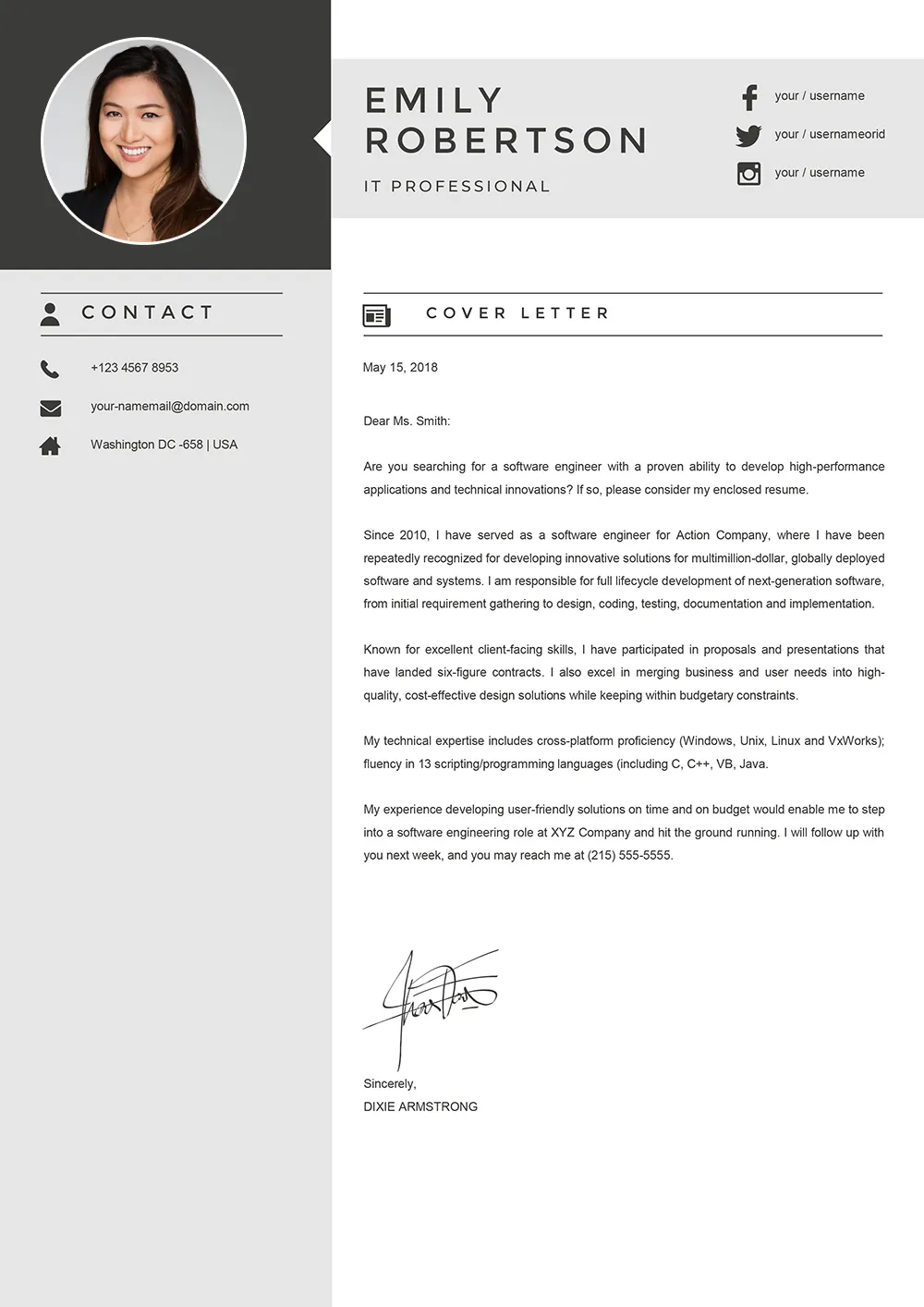
Choose a professional and readable font, such as Times New Roman, Arial, or Calibri. Use a font size between 10 and 12 points for the body text. Ensure that the font is consistent throughout the letter and that the text is clear and easy on the eyes.
Margins and Spacing
Use standard 1-inch margins on all sides of the page. Double-space between paragraphs to improve readability. Use single spacing within paragraphs. Proper spacing and margins create a clean and organized layout that enhances the overall presentation of your cover letter. These layout guidelines also keep your content scannable.
Proofreading and Editing
Proofreading and editing your finance cover letter are essential steps to ensure accuracy and professionalism. Carefully review your letter for any typos, grammatical errors, and formatting inconsistencies. A polished and error-free cover letter demonstrates your attention to detail and commitment to excellence.
Common Mistakes to Avoid
To make a strong impression, avoid common mistakes that can undermine your application. Paying attention to these potential pitfalls can significantly improve your cover letter’s effectiveness.
Typos and Grammatical Errors
Typos and grammatical errors can damage your credibility and make you appear careless. Always proofread your cover letter thoroughly and consider having someone else review it for any mistakes. A cover letter riddled with errors will almost certainly be rejected.
Generic Content
Avoid using a generic cover letter that you send to every company. Tailor your letter to each specific role and company, highlighting the skills and experiences that are most relevant. Generic cover letters demonstrate a lack of interest and can be easily dismissed.
Length of the Cover Letter
Keep your cover letter concise and to the point. Aim for a length of one page, as hiring managers often have limited time to review applications. Focus on the most important information and avoid including unnecessary details.
Finance Cover Letter Samples
Reviewing finance cover letter samples can provide valuable insights into effective writing techniques and formatting. These samples offer a framework for structuring your own letter and highlighting your qualifications.
Entry-Level Finance Cover Letter Sample
An entry-level finance cover letter should focus on your academic achievements, relevant coursework, internships, and any other experiences that demonstrate your potential. Highlight your eagerness to learn and contribute to the company. Tailor your cover letter to showcase your transferable skills and strong work ethic. It is vital to show your drive and enthusiasm.
Experienced Finance Professional Cover Letter Sample
An experienced finance professional cover letter should showcase your accomplishments, expertise, and leadership abilities. Provide specific examples of your successes, such as increasing profitability, managing budgets, or improving financial processes. Highlight your key skills and demonstrate your ability to drive results. Quantify your achievements whenever possible to illustrate your value.
Tailoring Your Cover Letter
Tailoring your cover letter is essential for making a strong impression. Customize each letter to the specific role and company, highlighting the skills and experiences that align with their requirements and values.
Researching the Company
Before writing your cover letter, research the company’s mission, values, and recent activities. This information will help you tailor your letter to their specific needs and demonstrate your genuine interest in the organization. Understanding their culture and goals allows you to showcase how your skills and experience align with their objectives.
Using Keywords from the Job Description
Carefully review the job description and identify the key skills, qualifications, and keywords. Incorporate these keywords into your cover letter to show that you meet the required criteria. This helps you pass applicant tracking systems (ATS) and ensures that your application is reviewed by the hiring manager.
Adapting to Different Roles
Adapt your cover letter to match the specific requirements of each role. Emphasize the skills and experiences that are most relevant to the position, even if it means highlighting different aspects of your background for each application. This shows that you’ve put thought into the application and understand what the company seeks. Tailoring each cover letter will significantly increase your chances of success.
